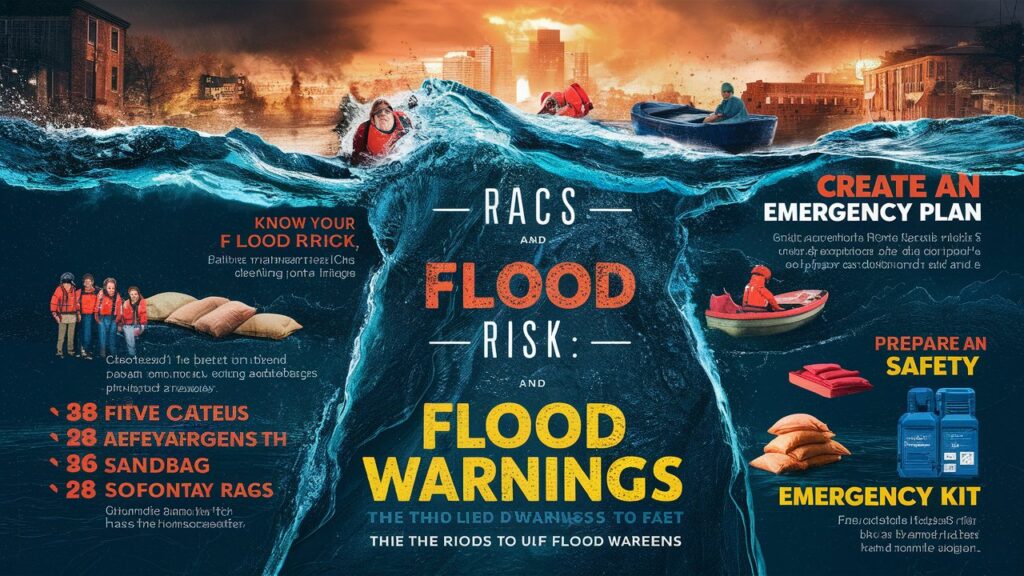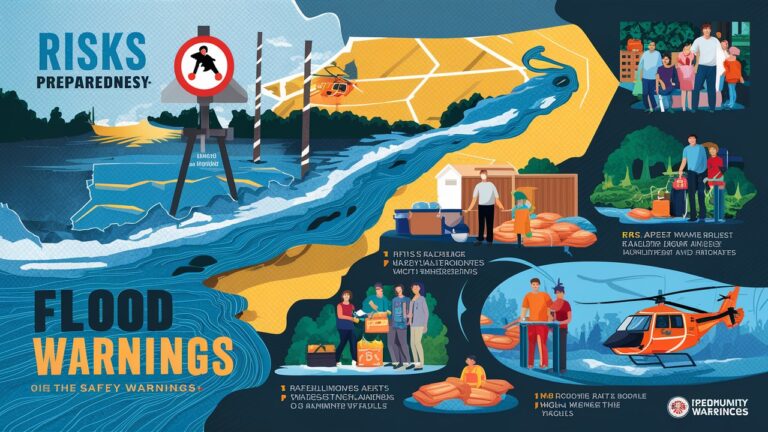Introduction
Floods are among the most common and devastating natural disasters, affecting millions globally each year. With climate change intensifying weather patterns, flood risks are escalating, making early warnings and preparedness more critical than ever. A flood warning is not just an alert—it’s a lifeline that provides communities with the time needed to protect lives, property, and infrastructure. This article explores the mechanics of flood warnings, actionable safety strategies, and the evolving technology shaping disaster response. By understanding these elements, individuals and communities can mitigate risks and recover more effectively when floods strike.
1. Understanding Flood Warnings: What They Mean and How They Work
A flood warning is an official notification issued by meteorological or disaster management agencies when flooding is imminent or already occurring. These alerts are based on real-time data from river gauges, rainfall measurements, and weather forecasts. Warnings are categorized by severity, ranging from advisories for minor flooding to emergencies for life-threatening situations. Understanding the terminology—such as “flood watch” (conditions are favorable) versus “flood warning” (flooding is expected)—is crucial for taking appropriate action. Modern systems integrate satellite imagery, hydrological models, and community reporting to improve accuracy and response times.
2. Types of Flood Warnings: Watch, Advisory, and Emergency
Flood alerts are tiered to reflect escalating risks:
- Flood Watch: Indicates potential flooding within 48 hours. Residents should monitor updates and prepare evacuation plans.
- Flood Advisory: Signals minor flooding that may disrupt daily activities but isn’t immediately life-threatening. Examples include urban street flooding or small stream overflows.
- Flood Warning: Issued when dangerous flooding is certain. Immediate action—such as evacuating or moving to higher ground—is required.
- Flash Flood Emergency: The most severe alert, reserved for sudden, catastrophic events, often triggered by heavy rains or dam failures. These require urgent sheltering or evacuation.
3. How Flood Warnings Are Issued: The Science Behind the Alerts
Meteorologists use advanced tools like Doppler radar, river level sensors, and predictive modeling to forecast floods. For instance, the National Weather Service (NWS) in the U.S. analyzes rainfall intensity, soil saturation, and watershed topography to predict flood paths. Hydrologists also assess historical data to estimate floodplains’ vulnerability. In regions prone to flash floods, automated systems send alerts via smartphones, sirens, or TV broadcasts. Community input, such as ground reports from volunteers, further refines these predictions.
4. Preparing for a Flood: Building Resilience Before Disaster Strikes
Proactive preparation can drastically reduce flood damage. Key steps include:
- Creating an Emergency Kit: Stock water, non-perishable food, medications, flashlights, and important documents.
- Developing an Evacuation Plan: Identify safe routes and shelters, and practice drills with family members.
- Protecting Property: Install sump pumps, elevate electrical systems, and use sandbags to divert water.
- Reviewing Insurance: Ensure your policy covers flood damage, as standard homeowner’s insurance often excludes it.
Local governments play a role by maintaining drainage systems, enforcing zoning laws, and educating the public through workshops.
5. During a Flood: Immediate Safety Measures to Save Lives

When a flood warning is active, prioritize safety:
- Evacuate Promptly: Avoid waiting until water levels rise. Follow official routes and never drive through flooded roads—just 12 inches of water can sweep away a car.
- Stay Informed: Use battery-powered radios or mobile apps for real-time updates.
- Avoid Contaminated Water: Floodwaters often carry hazardous debris, chemicals, or pathogens. Wear protective gear if contact is unavoidable.
- Cut Utilities: Turn off gas, electricity, and water to prevent fires or electrocution.
6. After the Flood: Navigating Recovery and Health Risks
Post-flood recovery involves both physical and emotional challenges:
- Safety Inspections: Return home only when authorities declare it safe. Check for structural damage, gas leaks, or mold.
- Document Damage: Photograph property losses for insurance claims.
- Health Precautions: Boil drinking water, discard spoiled food, and watch for symptoms like fever or rashes.
- Community Support: Volunteer groups and federal programs (e.g., FEMA) often provide aid for rebuilding.
7. The Role of Technology in Enhancing Flood Warnings
Innovations like AI-driven predictive models, drone surveillance, and crowdsourced data apps are revolutionizing flood response. For example, Google’s Flood Hub uses machine learning to forecast floods in over 80 countries, while IoT sensors provide real-time river level updates. Social media platforms also enable rapid information sharing, helping authorities coordinate rescues and resource distribution.
8. Community Preparedness: The Importance of Local Action and Policy
Effective flood management requires collaboration between governments, NGOs, and residents. Communities can advocate for improved infrastructure, such as levees or stormwater systems, and participate in floodplain mapping initiatives. Schools and workplaces should conduct regular drills, while policymakers must address climate resilience in urban planning.
Conclusion
Flood warnings are a cornerstone of disaster preparedness, offering the critical window needed to act. By staying informed, adopting preventive measures, and leveraging technology, individuals and societies can reduce the human and economic toll of floods. As climate-related risks grow, investing in resilient infrastructure and community education will be key to safeguarding future generations.
Frequently Asked Questions (FAQs)
Q1: What’s the difference between a flood watch and a flood warning?
A flood watch means conditions are favorable for flooding, while a warning indicates flooding is already happening or imminent.
Q2: How can I receive flood alerts?
Sign up for local emergency notification systems, download apps like FEMA or Weather Radio, and monitor NOAA Weather Radio.
Q3: What should I do if I’m trapped during a flood?
Move to the highest point possible, call 911, and signal for help using bright cloths or flashlights. Avoid entering attics unless equipped with an escape tool.
Q4: Does homeowners insurance cover flood damage?
Typically, no. Separate flood insurance is required, often through the National Flood Insurance Program (NFIP).
Q5: How long does it take to recover from a flood?
Recovery can take months to years, depending on damage severity, insurance processing, and community resources.
This comprehensive guide equips readers with the knowledge to navigate flood risks confidently. Stay vigilant, stay prepared.
